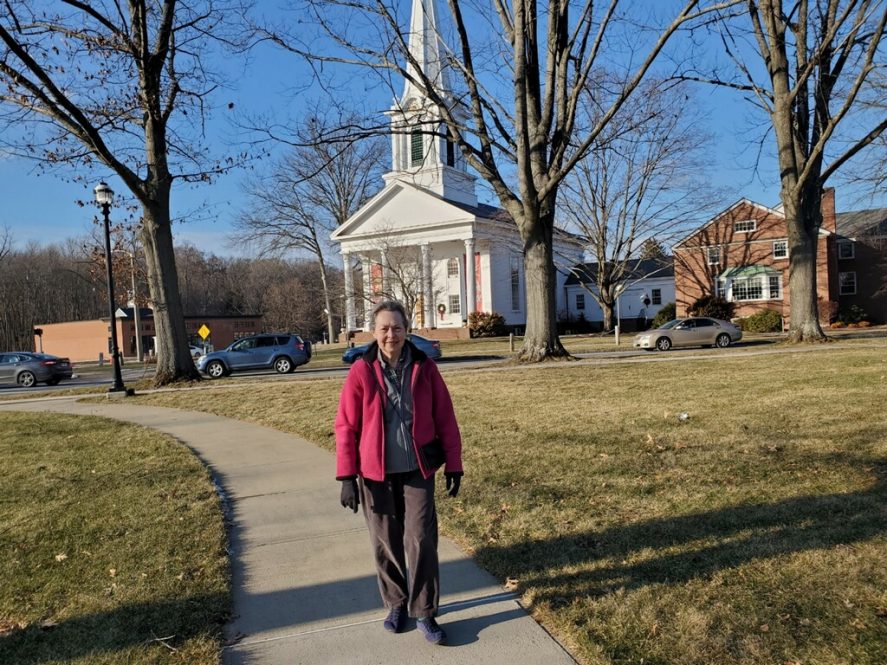Research shows that the COVID-19 pandemic, on top of everything else, may be having an indirect toll on our heart health. Potential factors include an increase anxiety and stress levels, reducing exercise opportunities, leading to a more sedentary lifestyle at home, or delaying health care out of fear of potentially contracting the virus.

LeNelle Suharto, 79, of Bloomfield, loves dancing, walking, playing tennis, and exercising at the gym, and staying active has always been an important part of her life. But when the pandemic struck, it became more challenging for her to remain as active as she liked. Plus, she would never want to go to the hospital in the midst of COVID-19.
Shortly before the pandemic started her heart health issues began.
“For a while I was finding that if I walked too quickly, rushed around, or began going upstairs, I was getting a chest pain on the right side of my chest,” reports Suharto. “But if I stopped to rest, it would just go away. Overtime, every time I had the chest pains, they would go away after I sat down and was still for several minutes.”
But then things dramatically changed.
“I woke up one day with chest pains, pains that wouldn’t go away. This time it was different. I could feel it in my back – and all the way through my body.”
Her UConn Health primary care doctor, Dr. Nina Carley, saw her, performed an EKG, and sent her immediately to the UConn Health Emergency Department by ambulance.
“Suddenly nurses and doctors started coming into my room – and asking why I didn’t come in sooner. I told them the pain kept going away. But when I woke up with the pain for the first time, I knew something was seriously wrong.”
Following a diagnostic angioplasty UConn Health’s Calhoun Cardiology Center’s Cardiac Catheterization Laboratory placed stents to open up her two almost-fully-blocked arteries.
“Everything seemed good; I thought that was the end of the chest pains,” says Suharto, but as the pandemic started, her heart health took another unexpected turn.
“My gym was closed, so every day I went for a long walk,” says Suharto. “But my chest pain started again – once again on the right side. I could hardly walk as the chest pains came on but eventually again they would go away after I sat down and stayed very still.
“I delayed going to the hospital, because I really didn’t want to be near a hospital because of the COVID situation. But then I had a follow-up phone call with Dr. Supriya Tigadi, my new UConn Health cardiologist. I told her I was having chest pains again.”
“Put down the phone and go to the ER,” Tigadi told her.
Suharto’s husband dropped her off at the Emergency Department, as he could not go in due to COVID visitor restrictions at the time.
A repeat angioplasty showed the same arteries were blocked again, with reduced blood flow to her heart.
“My only option was an open-heart coronary artery bypass surgery,” Suharto says. After a week’s hospital stay to get blood thinners out of her system, she had open-heart surgery on June 9, 2020. In fact, Suharto’s open-heart surgery at UConn John Dempsey Hospital was the first to occur following the shutdown due to the pandemic.
“I was all on my own due to COVID. I was very afraid. It was all frightening – as I didn’t have anybody with me. But I woke up from surgery saying to myself, ‘I’m still here- that’s a good sign.’ UConn Health took very good care of me.”
Suharto now looks forward to the end of the ongoing pandemic and it fully getting out of her way of maintaining her heart health.
“I can do anything,” says Suharto after open-heart surgery at UConn Health. “I can move around, walk, go upstairs, and I can even dance if I want to. All is well!”
But she is still staying close to home.
“Due to the COVID pandemic I’m just not back to all my activities I love. For all our sake I want the pandemic to end. While it looks bleak now, I’m more hopeful. It’s time to get back into the world and do things we love. I want to get back into walking and my exercise.”
She has a message for all women this February Heart Month: “Absolutely listen to your body and don’t ignore your symptoms. If they are persistent, don’t wait, and look further into the issue with your doctor immediately. Don’t get to the point where you are running to the ER with severe chest pain and heart blockages like me.”
Suharto has always kept top of mind the typical heart attack warning signs but never thought her symptoms were a heart issue at all.
“My pain was on the right side of my chest, and I always thought it was the left side you needed to worry about where the heart is actually located,” she says. “Other than my right-side chest pain, I never had any other heart issue symptoms. But it turns out my artery blockages were located on the right side of my heart.”
She feels blessed to have prevented a heart attack.
“I think I was very lucky. I now know I could have had a heart attack at any time,” Suharto says. “Interestingly, when I was having my heart issue it was just after the passing of WFSB-TV’s anchor Denise D’Ascenzo. Her death from a heart attack was such a shock to all of us and a very sad moment. I have to give credit to her for my following up with Dr. Carley. It was that very next week that my chest pain was different and I called my doctor.”



